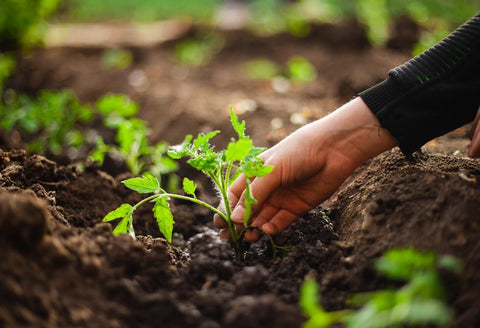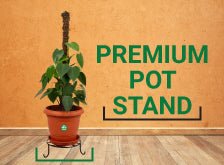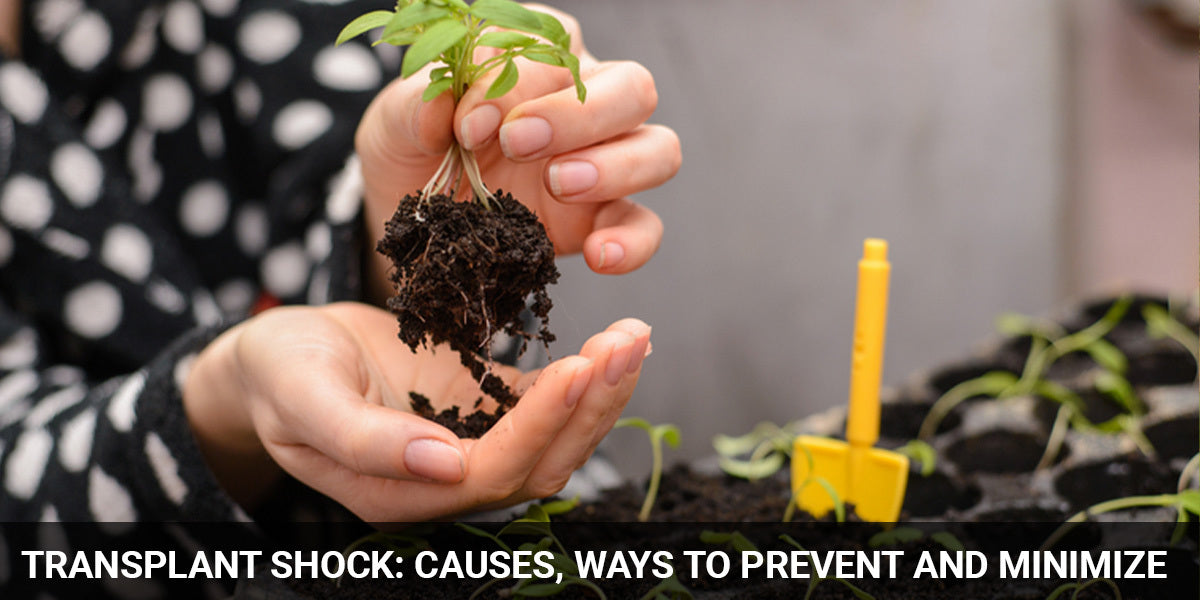How to Grow
Transplant shock: causes, ways to prevent and cure
Gardening is a versatile hobby and also a healthy one. Growing a wide variety of plants in the backyard of your home is just an amazing experience we all can have. Gardening requires some skills and techniques. Some of them would be fun but some can make you feel guilty.
Growing plants from seed is a great way to start gardening. But when the raised seedlings attain a certain height, transplanting those babies is a bit of a complicated phase.
Transplantation
It is the process of relocating a plant from one location to another location. It is an important event in every plant’s life, sort of like moving to a new house. But it is not as easy as it sounds. It can be a stressful experience for plants. Here, we are using the term “Transplant shock”, understanding the meaning of this may help you to find ways to avoid and cure it.

Transplant shock
When you move a plant from its place to another, it’s a bit like a shock to them as they never expected this sudden relocation of their home. Newly transplanted plants won’t have an extensive root system. As the roots are disturbed, they can’t carry out their regular activities such as absorption of water and nutrients. So, this results in higher chances of susceptibility to outside injuries, pests, and diseases.

Major causes of Transplant shock
There are several factors that influence the transplant shock in plants, some of the most common are:
- Poor or injured root system - Transplanted plants do not get well established as they have poor or injured roots. Such plants are very weak and more sensitive to other stress factors
- Improper planting - Planting depth also plays a major role here. Deep planting causes suffocation of roots, while shallow planting causes more root stress
- If you put the plant in a container, due to lack of sufficient space roots may be unable to spread
- Proper watering after transplanting is very important
- Considering the plant’s growth habit, climatic requirements, and soil also plays a major role
- Exposure of the roots to the air allows the tiny invisible rootlets to dry and die off
- The plant that has been transplanted from its original place loses half or more of its root and production system
- Companion plants of the new environment also influence the transplanted plants to some extent
- Soil type - Even in the same garden soil type differs from one corner to another. One side of the corner may have clay soil while another may have humus-rich, well-drained soil.
Signs of Transplant shock


- The most common sign of transplant shock is leaf scorch of recently transplanted plants. Leaf scorch results in bronzing or yellowing of the tissue present along the leaf margins
- Significant reduction in the plant’s growth and brown wilted leaves that droops drastically
- Shortened internodes, which can result in shortened branch tips
- Sometimes plants that are suffering from transplant shock result in leaf rolling or leaf curling.
Ways to prevent Transplant shock
Most of us do not consider transplant shock as a major issue. But this may result in losing maximum plants in further stages of their growth. So, it is better to take some preventive measures before transplanting.


- The best time of the year to transplant your plants is at the beginning of spring or the end of the fall season. These two seasons provide the best conditions for transplantation
- Time of day in which you transplant your seedlings can affect the further growth of your plants. Since the roots are disturbed, they may fail to face the stress of water loss during hot sunny weather. Transplanting on a cloudy day or in the late evening will help to prevent much water loss and wilting, as there is minimum exposure to sunlight. So, plants will get enough time to adjust to the new environment without any transplant shock
- Try not to disturb the roots much while taking plants out of the container. Because there is a higher probability of root ball getting disturbed
- Consider the geographical area, soil type, and drainage where the plants are being transplanted
- Water the plant before transplanting. It keeps the root ball moist, so there will be fewer chances of roots getting disturbed
- Try to take out as many roots as possible. Because the tiny roots in the root ball are very necessary for the healthy growth of the plant
- Watering immediately after transplanting, makes the plant adjust it to the new environment
- Remove if any dead bark, dried leaves, and foliage of the plants which are being transplanted
- Observe newly transplanted plants regularly if there are any pests and disease infestations as they are too susceptible for them.
Ways to minimize Transplant shock
Even with all the precautions, Some of the plants may undergo transplant shock. No worries, there are some measures that help the plants to overcome this situation.

- Adding some sugar to the soil of the transplanted plant helps to recover it from transplant shock. Dilute sugar in plain water, mix the solution thoroughly and apply it to the root zone of the plant
- Trimming back in the transplanted plants allows it to save more energy rather than spending it on old plant parts. Trimming helps the plant to focus on regrowth, this encourages quick recovery
- Always keep the roots moist to prevent the rootball from drying out. It will fasten the reestablishment of the plant to its new home
- Give your transplanted plant some time to recover. Recovery time may vary from plant to plant. So, the care and time you give can help the plant to come back on its own.
Hope you understood that, prevention is better than cure even in the case of plants. Taking a few more preventive measures would help your plants to refrain from transplant shock. Even after following all these preventive measures, if your plants undergo any stress, then you have curing measures. So, always enjoy the gardening and endure the beauty of mother nature.
FAQs About Transplant Shock
1. What are the signs of transplant shock?
Bronzing or yellowing of the tissue present along the edges of leaves, brown wilted leaves that droops drastically, and stunted growth of the recently transplanted plants.
2. Generally, how long does it take for a plant to establish after transplanting?
Recovery time may vary from plant to plant. It depends on the age, type of the transplanted plant, soil type, and climatic condition of the planted location. In the seedlings stage, it will take up to 2-3 weeks, but in matured plants or trees, it will take up to years.
3. When is the best time to transplant plants?
If you are planning to transplant any plant on a sunny day, then drop the idea. It will harm your plant. So, choose any cloudy day or late evening to move your plant from its place.
4. Which is the best time of the year to transplant plants?
Transplant the plants at the beginning of spring or the end of the fall season of the year. Because the cool air temperature of these two seasons helps the recently shifted plants to survive the shock.
5. Why it is important to water the plant immediately after transplanting?
Watering immediately after the transplanting keeps the root ball moist, this will help it from drying out and further root damage. Watering also helps in quick recovery from transplant shock.
6. Can plants survive transplant shock?
Yes, plants can survive transplant shock with proper care. Be patient, give some water, and time to them. They will recover.
7. Is it normal for plants to wilt after transplanting?
Yes, it is a commonly seen sign of transplanted shock. While transplanting there is a probability of roots getting damaged. Due to this stress, they fail to absorb sufficient water. This results in wilting of leaves.
8. Can we give more water to the transplanted plants?
Too much watering is not good for recently transplanted plants. They want the water to keep their root ball moist but not wet as it can be more stressful.
9. How to revive plants from transplant shock?
Trimming back of old, dried leaves and foliage, adding some sugar to the root zone, and keeping the root ball moist always helps your plants to fasten their recovery.
10. Does sugar water help the plants to overcome transplant shock?
Yes, adding a little amount of sugar solution to the plant’s root zone would help in increasing the new growth of the transplanted plants. But, make sure you are not adding much as it results in reverse osmosis, which makes the plant lose water.
Popular Searches: Garden Accessories for Sale, Compost Bin India, Plastic Flower Pots Online, Contemporary Plant Pots, Hanging Pots Online, Colorful Plant Pots, Bird Feeders Online, Rectangular Planters Online, Small Pots Online, Flower Pots Online, Kitchen Waste Compost Bin, Balcony Railing Planter, Buy Pots Online, Indoor Plant Pots, Metal Flower Pot



